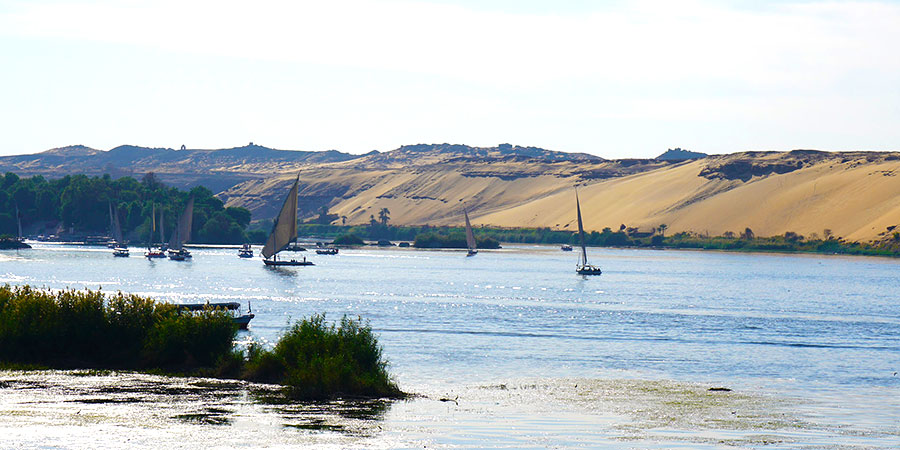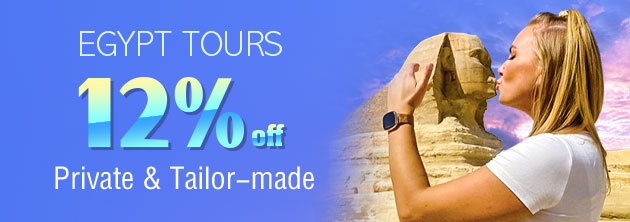Nile River - The Cradle of the Ancient Egypt Civilization
Ancient Egypt is a preeminent civilization in the Mediterranean region. Right from around 3100 BC to its conquest by Alexander the Great in 332 BC, Egypt for over 30 centuries has seen huge growth, change and evolution in its civilization.

|
We will look at the various stages of Civilization along the river in this article.
Most of the history of Egypt is study based on three Kingdoms - Old, Middle and New
Although there were some shorter intermediate periods that separated the kingdoms from each other’s times, these three were the more unified political powers. But even before the old Kingdom period started, the Egyptian Civilization started because people started settling around the Nile River and focused on sedentary agriculture. Today, it is a leading place for agriculture, as well as other specialized non-agricultural economic industries and activities.Before 3100 BC
According to the experts, most of the settlements in the Nile Valley was confined only within a few stretches of the river because of the fertility of the land. The river flooded annually that helped the ancient Egyptians to set their seasons and grow the harvest. Most scholars believe that the time was around 3100 BC when the leader called Narmer or Menes started unifying Egypt politically; and almost gained the control of the lower as well as of the upper Egypt. The southern part is closer to the Delta region while the upper one is away from it.The political unification, which is often referred to as the divine kingship, let others believe that the person was a living incarnation of God. It is supposed that the use of hieroglyphics started around this time. It is a form of writing which uses various images and sounds to express and remains a very interesting source of information and study till date. Egyptians started writing literature with the same written form, many of which are preserved till date.

|
Old Kingdom - 2686 to 2181 BC
This is when the old Kingdom started and Egypt was unified as a single state. The rulers of this old Kingdom were the first to build pyramids and involved the peasants during the off-season of their farming. This was the time when they started going for trade sailing across the Nile River. They traded incense, ebony, gold, copper, and Lebanese cedar.Middle Kingdom: 2000-1700 BC
Political unification and fragmentation started during this time and the kings started taking over the power from regional governors. The Hyksos also came during this time, who brought the political instability. Around 1650 BC, these Semitic people imposed their political powers. With advanced cultural and technological innovations, the Hyksos started many new things such as breeding animals and cultivating new crops. This was the time when the civilization beside the Nile River saw things such as battle-axes, composite bow, and fortification techniques for fighting warfare.New Kingdom: 1550-1077 BC
The expulsion of the Hyksos marked the starting of New Kingdom 1550 BC. It was the most prosperous time for the nation and enjoyed a centralized political control. Hatshepsut, Egypt’s most famous female ruler brought in a lot of wealth to the country and created the mortuary temple at Deir el-Bahri. The various temples during the Hyksos rule were also restored by this time. The concept of pharaoh, the king's palace, was started then and the ruler was the personification of divine kingship. In mid-1300s BC, the first instance of monotheism started during Akhenaten’s time but it did not extend after him.

Temple of Hatshepsut, Egypt
|
World’s first known peace treaty was signed by Hittites and Egyptians after a conflict under the pharaohs Seti I and Ramesses II.
Read More: 7 Facts about Egypt History
The culture around the Nile River
Various ancient texts show numerous pictures about agriculture and animal husbandry in the country but the Nile River itself is not there. The “aquatic scenes” are otherwise represented by small watercourses or swamps. There are many paintings about the great festivals that show the presence of large ships and the scenes, praise Pharaohs, who commanded such expeditions and not much about the Nile River.That, however, does not take away the importance of the river. Delta and its mouths is what served as an obstacle to the invaders. Traversing the desert or getting into Asia was difficult because the transport was facilitated by boats on the Nile. In social terms, however, the river actually separated people and people who did not have boats could not cross the river.
The Egyptian civilization was born surrounding the Nile River, and most of the settlement moved south, from where the river originated. The year and calendar were determined and set after the Nile and the stars. The flooding time of the river, that is around the middle of July was considered the New Year.
See More Egyptian Culture:
An Ultimate Guide for Nile Cruise
Egypt Festivals: Exploring the Country’s Roots
Clothing in Egypt - From History to Present Day

